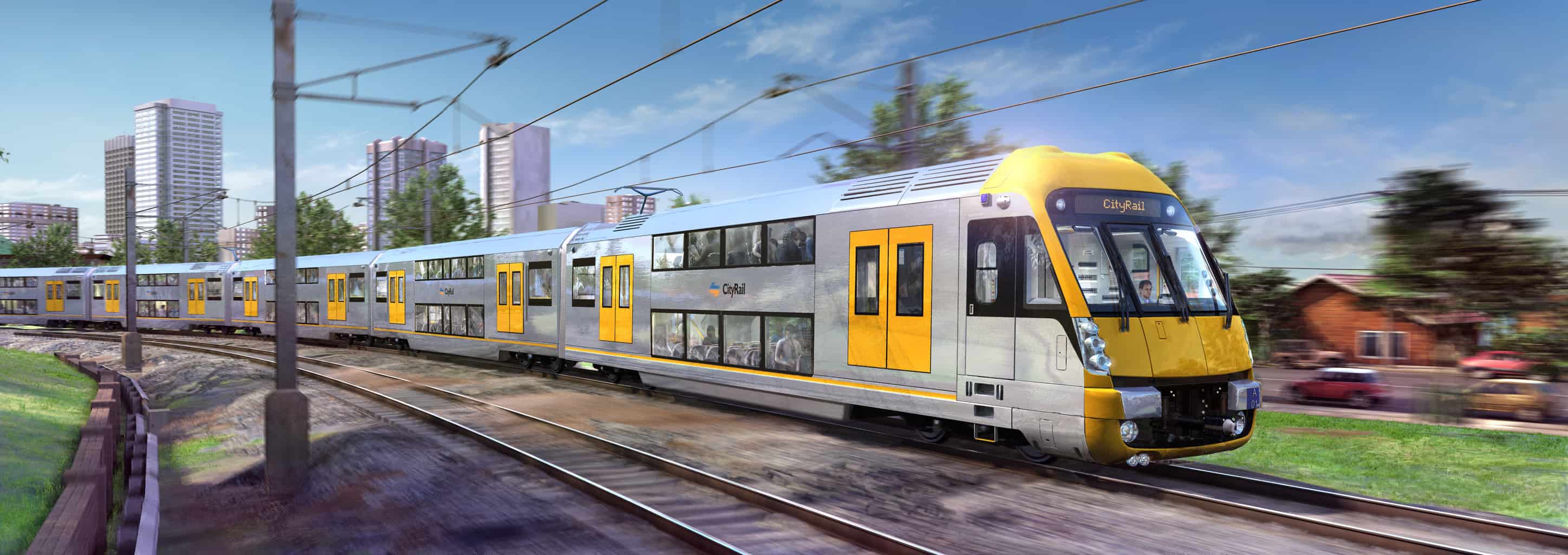The Australian business newspapers and websites are all reporting on the “dud” contract that Downer EDI has been saddled with over the construction of 78 eight-car trains for New South Wales’ RailCorp. Market analysts say that company has lost $A1.7 billion in value this year.
CEO Geoff Knox, a man in genuine risk of becoming unemployed, is quoted as saying:
“We do seem to be able to build trains successfully and make good money on other states in this country, but in this state we seem to not do well and others seem to not do well…”
Others can discuss the financial problems of Downer EDI but Knox seems to only look at the contract rather than the reasons behind the “time consuming” design requirements of the contract – The Waterfall rail disaster of January 2003, the commission of inquiry’s reports and the government’s promises.
 Knox said in the Australian Financial Review on 2 June 2010 that the company had received 19,000 engineering inquiries about the train’s design, and that this had contributed to contract problems. John Durie in The Australian has little sympathy and says that the contract was poorly negotiated and that Knox “must take ultimate responsibility”. (Knox sacked the CEO of the company’s rail division, Guy Wannop, on 1 June 2010).
Knox said in the Australian Financial Review on 2 June 2010 that the company had received 19,000 engineering inquiries about the train’s design, and that this had contributed to contract problems. John Durie in The Australian has little sympathy and says that the contract was poorly negotiated and that Knox “must take ultimate responsibility”. (Knox sacked the CEO of the company’s rail division, Guy Wannop, on 1 June 2010).
The following commitments were made by the New South Wales Government in response to the final report of the commission of inquiry in 2005:
“Design and procurement of rolling stock
RECOMMENDATION: 29. All railway owners and operators should have a quality assurance program for the design and construction of rolling stock and regular review of construction to ensure that the rolling stock satisfies the original functional performance specifications.
RESPONSE: Supported and being implemented.
RECOMMENDATION: 30. The rail safety regulator should set standards for the design, manufacture, testing and commissioning of rolling stock to ensure that the rolling stock is fit for its purpose.
RESPONSE: Supported in principle and being implemented through other means.
ITSRR will introduce regulations including for rolling stock that set out the expectations (or performance outcomes) required of industry.
The regulations will be developed on a national basis, through the National Transport Commission process, to ensure consistent application across the Australian rail industry.
Notwithstanding the expectation that industry will develop and maintain appropriate safety standards, ITSRR will retain the power to mandate such standards if the industry clearly fails to deliver satisfactory safety outcomes.” [subheadings added]
Should the government not be making recommendations that relate to safe design and manufacture to ensure the trains are “fit for purpose”?
The contract may be a “dud” in that it is not as profitable as it could be but a company of the size and experience of Downer EDI should have known better when dealing with a government contract.
It is fair to say that 19,000 is a lot of engineering inquiries in the contract and that, it could be argued, this indicates a fluffy design and manufacturing brief from the Government but Government contracts are notorious in this context.
Downer EDI issued a media briefing on 1 June 2010 in which Geoff Knox discusses the challenges presented by the Waratah project and the role he has been given. (The audio is available online) A spokesperson for Downer EDI reiterated Knox’s statement in the briefing to SafetyAtWorkBlog that the Waratah train was supposed to be 80% similar to the Millennium train. The reality is very different.
Terry Kearney is the CEO of Reliance Rail, the public-private partnership that is manufacturing the trains ( Downer EDI is a 49% equity partner). Kearney said on 27 April 2010 that:
“The Waratah trains will be in passenger service every day and night for the next 30 years or more, and safety and reliability will not be compromised to rush the trains into passenger service.”
Public-private partnerships have been a controversial development since they became a popular option for cash-strapped economies but few enter the relationship without being fully aware of the risks and consequences. What seems to be occurring in the Waratah train project is a client wants to make sure that the product they are purchasing is safe, fit for purpose and matches a 30-year guarantee.
It is hard to argue over the apparent commitment of the government to “getting it right”. After all seven people died at Waterfall and 41 injured in 2003. The Glenbrook incident of December 1999 killed 7 and injured 51. Few in Australia could forget the Granville rail incident of 1977 where 83 died and 210 were injured. All three incidents occurred in New South Wales.
A 2007 article about the establishment of the PPP is available online.
